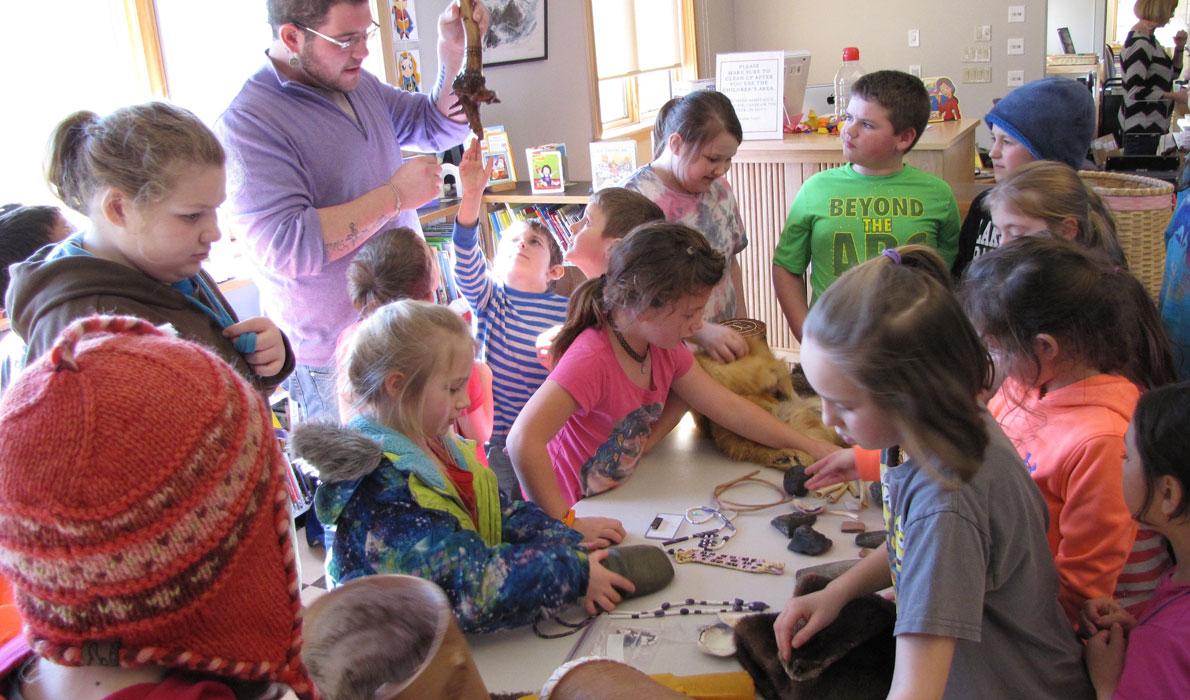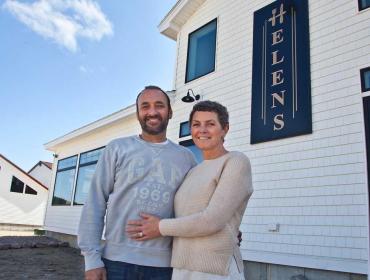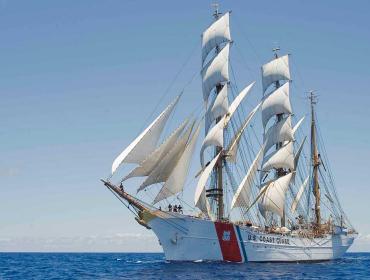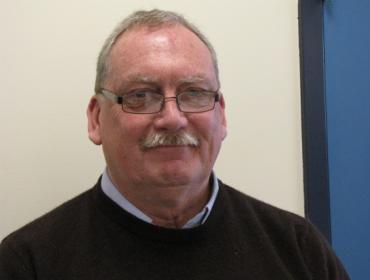Posted March 1, 2016
Last modified March 23, 2016
What was the currency used by our native peoples? Wampum, right?
Not so fast.
George Neptune, an educator with the Abbe Museum in Bar Harbor, offered a different explanation for the seashells that were found in most native cultures. Neptune, a member of the Passamaquoddy tribe, spoke to school children and adults at the Swan’s Island Educational Society building, which serves as a library and historical society, on Feb. 26.
Just because we all wear shoes, he told the 50 or so who came to hear the presentation, doesn’t mean we can use them to buy a new car. Drawing out possible explanations from the children, one finally hit upon it, and Neptune repeated the comment loud enough for all to hear: “They can make cool stuff out of seashells.”
Fashion was an important element of Wabanaki culture, he said. Animal skins were embroidered using porcupine quills. A skinned fox hung around the neck and shoulders provided warmth from the winter, but also looked “fabulous,” Neptune said.
The entire school population—35 or so from kindergarten to 8th grade—attended the presentation, and Neptune was adept at drawing out the children’s inquisitive nature. After opening with salutations made in his native Passamaquoddy language (from which our words “moose” and “moccasin” are derived), he asked listeners to imagine themselves on the island 600 years ago.
What would the island look like then?
A boy said there would be no town, but Neptune countered that a settlement of native people might be close to being a town.
“Wabanaki people typically didn’t stay in one place the entire year,” Neptune said, so they may have camped on the island during the summer months to fish and dig shellfish. He described the huts in which natives lived, using eight or so birch saplings bent over with birch bark and spruce root woven over the tops.
How would the sapling be cut? Neptune held up a stone axe head, and told the students it would take about ten hours—5,000 chops—to cut a sapling the thickness of a pool cue.
Is there a better way?
After students made several guesses, Neptune revealed that a fire would be started at the base, softening the tree for cutting.
Birch bark has anti-microbial qualities, he said, “And it’s waterproof.” The bark was fashioned into baskets and bowls in which liquid food could be cooked and berries stored beneath the ground, and of course, used to build canoes.
Another student, describing the island 600 years ago, said there would be trees and grass, but Neptune noted that most of our grasses came from Europe.
The questions then turned to other survival matters: food, water, clothing. On the last point, which students hadn’t thought of, Neptune said, “We’re not going to last long if we’re all running around naked,” which elicited laughter.
Holding up the hides of deer, fox and beaver, he explained how the animals provided warmth. Beaver, seal and otter fur contain natural water repellents, he said.
On food, the children guessed apples and chickens, only to learn that crabapples are the sole native species and chickens were imported from Europe. Rabbit, berries and finally—after a few moments—fish made the list offered up by the students. Then crabs and lobster were suggested.
“Yeah, lots of lobsters! Now we’re talking!” Neptune said.
Hunting led to a discussion of weapons, which led to talk of flint, which was available only in the Moosehead Lake region. Some tribes traveled to Maine and fought with the local people there to get the flint, he said. After some prodding, students hit up the idea of trading for the flint.
Neptune also told the Wabanaki creation story, in which a male and female spirit were each released from a split tree and given life, but only if they would agree to take care of the land, water and animals.
For his part, Neptune told the students to speak up if they saw anyone digging up native burial or archaeological sites.
The Wabanaki, the “people of the dawn,” as they are known, include five tribes: the Passamaquoddy, Penobscot, Mi’kmaq, Maliseet and Abenaki.
The Maine Seacoast Mission was a co-sponsor of the event.

Contributed by




